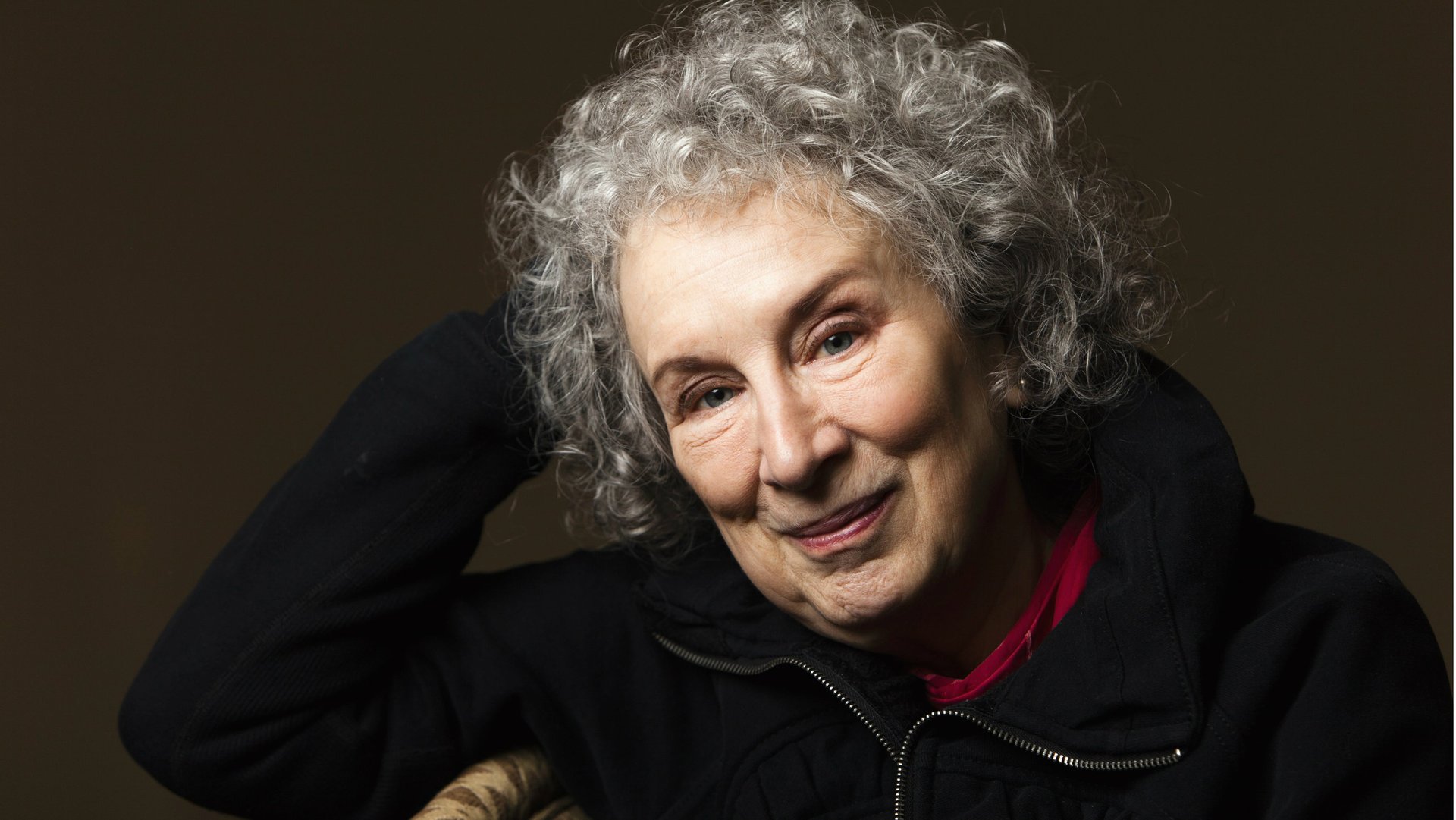Margaret Atwood explains why “The Handmaid’s Tale” is so compelling today
“I am so shrieking old,” wrote Canadian author Margaret Atwood in a Reddit “ask me anything” earlier this week. At 77, the author of the 1985 dystopian novel The Handmaid’s Tale is having a moment. The book’s sales have surged, likely due to what some call the “Trump bump” for dystopian literature, and a Hulu adaptation of the story starring Elizabeth Moss will premiere on April 26.


“I am so shrieking old,” wrote Canadian author Margaret Atwood in a Reddit “ask me anything” earlier this week. At 77, the author of the 1985 dystopian novel The Handmaid’s Tale is having a moment. The book’s sales have surged, likely due to what some call the “Trump bump” for dystopian literature, and a Hulu adaptation of the story starring Elizabeth Moss will premiere on April 26.
Addressing the readers of Reddit and the New York Times in an essay on Saturday, Atwood offered clues to what has made The Handmaid’s Tale a timeless—and chilling—classic.
It has basis in truth
Atwood’s novel features Offred, a “handmaid” who is forced to bear children for the upper classes in a theocratic dictatorship set in the Republic of Gilead, once the US.
On Wednesday, she wrote of the proposed rollback of women’s healthcare: “Who knew that this would ever have to be defended? Childbirth care, pre-natal care, early childhood care — many people will not even be able to afford any of it. Dead bodies on the floor will result. It is frightful. Then there is the whole issue of sexual violence being used as control — it is such an old motif.”
She expanded upon this in the New York Times:
“The control of women and babies has been a feature of every repressive regime on the planet,” she wrote. “Without women capable of giving birth, human populations would die out. That is why the mass rape and murder of women, girls and children has long been a feature of genocidal wars, and of other campaigns meant to subdue and exploit a population. Kill their babies and replace their babies with yours, as cats do; make women have babies they can’t afford to raise, or babies you will then remove from them for your own purposes, steal babies — it’s been a widespread, age-old motif.”
In another Reddit AMA from 2014: “One of my rules for writing [The Handmaid’s Tale] was that I would not put anything into it that had not happened in human history or for which we did not already have the tools. I was drawing upon some very discouraging chapters in the human story. Having been born in 1939 and therefore having been a small child during the war and a less small one right after it, I was aware of the suddenness with which things we think are stable can change for the worse. So I have never thought, ‘It can’t happen here.'”
“The literature of witness”
In addition to a basis in history—and echoes in current events—Atwood said The Handmaid’s Tale was powerful because it falls into a category known as “the literature of witness.” The protagonist writes her story, and then hides it in hope of a future reader.
“Every recorded story implies a future reader Robinson Crusoe keeps a journal. So did Samuel Pepys, in which he chronicled the Great Fire of London. So did many who lived during the Black Death, although their accounts often stop abruptly. So did Roméo Daillaire, who chronicled both the Rwandan genocide and the world’s indifference to it. So did Anne Frank, hidden in her secret annex.”
“This is an act of hope,” she wrote, and guessed that amidst today’s political climate, many others may be writing their stories for a future reader at this very moment.